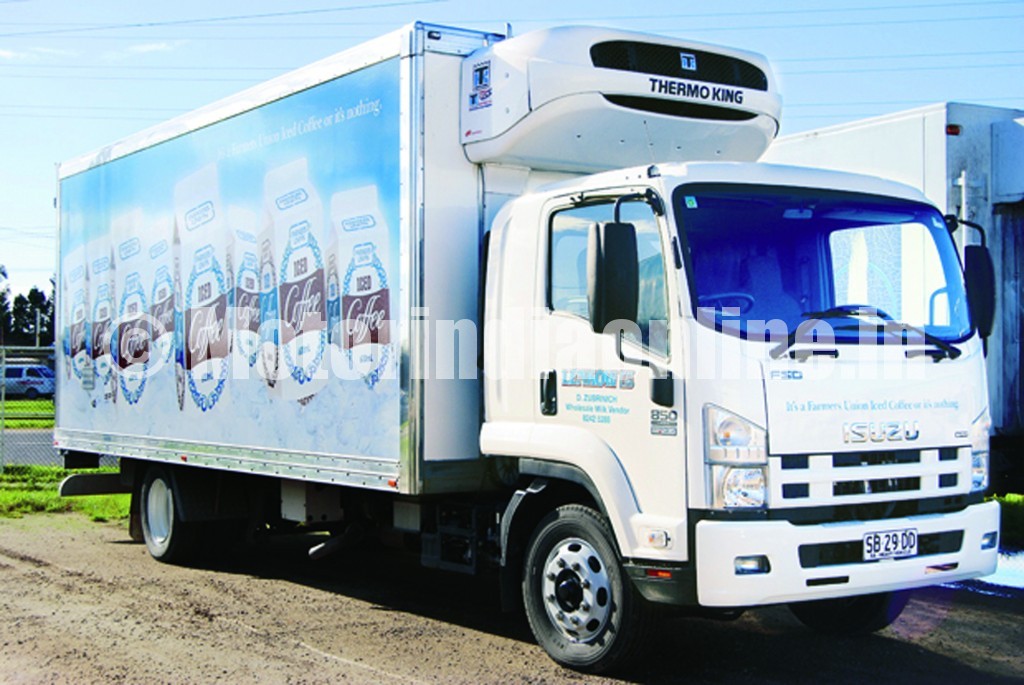How to Select a Transport Refrigeration Company for Ideal Performance
How to Select a Transport Refrigeration Company for Ideal Performance
Blog Article
How Cooled Trucks Operate to Guarantee Safe and Effective Shipment of Perishable Product
Refrigerated trucks play an important function in the supply chain, making sure that perishable items are transferred securely and successfully. Utilizing innovative refrigeration modern technologies and robust insulation, these lorries preserve specific temperature level control, which is crucial for protecting the quality of delicate items.
Review of Refrigerated Trucks
Cooled vehicles, frequently described as reefer trucks, play a critical role in the transport of subject to spoiling goods across different markets. These specialized lorries are made to keep certain temperature level varieties, guaranteeing that items such as fresh fruit and vegetables, dairy items, meat, and pharmaceuticals stay safe for consumption and efficient use. The operation of chilled trucks is important in decreasing spoilage and prolonging the rack life of temperature-sensitive products.
Reefer vehicles are furnished with shielded cargo areas that can maintaining reduced temperatures, which can be adjusted according to the kind of goods being transported. The lorries commonly make use of a refrigeration system powered either by the car's engine or an independent power resource, permitting regular temperature control during transit.
Along with temperature level maintenance, these vehicles are often designed with innovative monitoring systems to track the internal environment, ensuring compliance with health and safety and security guidelines. In addition, chilled vehicles contribute dramatically to the supply chain, allowing timely deliveries to sellers, dining establishments, and customers. Their essential function highlights the relevance of reputable transportation services in today's worldwide market, where freshness is paramount.
Trick Refrigeration Technologies
Preserving optimum temperature level control in chilled vehicles relies upon numerous essential refrigeration technologies that boost efficiency and reliability. Among the most typical systems is the vapor-compression refrigeration cycle, which utilizes a cooling agent to take in heat from the truck's inside, lowering the temperature level. This procedure includes a compressor, condenser, expansion valve, and evaporator, functioning in tandem to circulate the cooling agent and preserve a constant environment.
Another notable technology is using eutectic plates, which keep and launch thermal energy. These plates are loaded with a phase-change material that solidifies at a certain temperature, offering a stable air conditioning source. This method not only boosts power effectiveness yet also reduces the requirement for constant power supply during transit.
Furthermore, advanced insulation products, such as polyurethane foam, considerably enhance the thermal performance of cooled vehicles, reducing temperature level changes during loading and discharging. Some modern-day chilled vehicles also include telematics systems, enabling real-time tracking of temperature and performance, hence guaranteeing conformity with safety and security standards. Together, these modern technologies guarantee the safe transportation of perishable products while optimizing operational performance and decreasing power consumption.
Temperature Control Devices
Effective temperature level control systems are important in making sure the honesty of perishable goods throughout transport. Cooled vehicles make use of sophisticated innovations to keep regular temperature varieties, stopping perishing and guaranteeing item safety and security. Central to these devices is the refrigeration device, which operates making read what he said use of vapor-compression or absorption refrigeration systems. These systems are created to cool the air within the freight space successfully and maintain the required temperature throughout the trip.
Additionally, contemporary cooled vehicles are equipped with electronic thermometers and programmable temperature level tracking systems. These systems enable real-time monitoring of inner temperatures, supplying signals if the temperature deviates from the established array. This ability is vital for conformity with health and wellness regulations.
Insulation also plays a crucial role in temperature level control. Top notch insulation materials lessen heat exchange, protecting the wanted inner problems. Airflow management within the cargo area is crafted to make sure consistent temperature level distribution, protecting against hotspots that might compromise item integrity.
Ideal Practices for Packing

First, it is vital to pre-cool the truck prior to packing. This practice enables the temperature control system to maintain, producing an optimal environment for helpful resources perishable items. Next off, products must be loaded in a manner that advertises airflow. Prevent overwhelming and obstructing vents, as this can bring about temperature level fluctuations and hotspots.
Making use of pallets or shelving can help in arranging items, guaranteeing that heavier items are positioned near the bottom to prevent squashing lighter items. In addition, it is essential to segregate various kinds of items, especially those with differing temperature level requirements, to prevent cross-contamination and putridity.
Lastly, safeguarding the tons with straps or nets will certainly avoid movement throughout transit, thus minimizing the danger of damage and keeping the stability of temperature-sensitive items. By adhering to these ideal practices, operators can make certain safe and effective distribution of subject to spoiling items while optimizing the performance of their cooled trucks.
Difficulties and Solutions in Transportation
One considerable issue is temperature level variations, which can occur due to tools malfunction or improper loading methods. Additionally, roadway conditions and delays can even more worsen temperature control problems, especially throughout expanded transportation times.
Advanced telemetry can give real-time temperature level data, signaling drivers to any kind of abnormalities. Training employees on ideal loading and unloading techniques can lessen the danger of temperature discrepancies.
Another key option involves click for source course optimization. Using general practitioners and website traffic monitoring technologies can help vehicle drivers choose the most efficient paths, minimizing transit times and lessening exposure to negative problems. Teaming up with reputable logistics partners that focus on chilly chain stability is likewise important for ensuring that products remain within called for temperature arrays.

Final Thought
In conclusion, cooled trucks play a vital role in the effective and secure transport of subject to spoiling items. Utilizing sophisticated refrigeration modern technologies and reliable temperature control devices makes sure that items remain within needed temperature level varieties.

Report this page